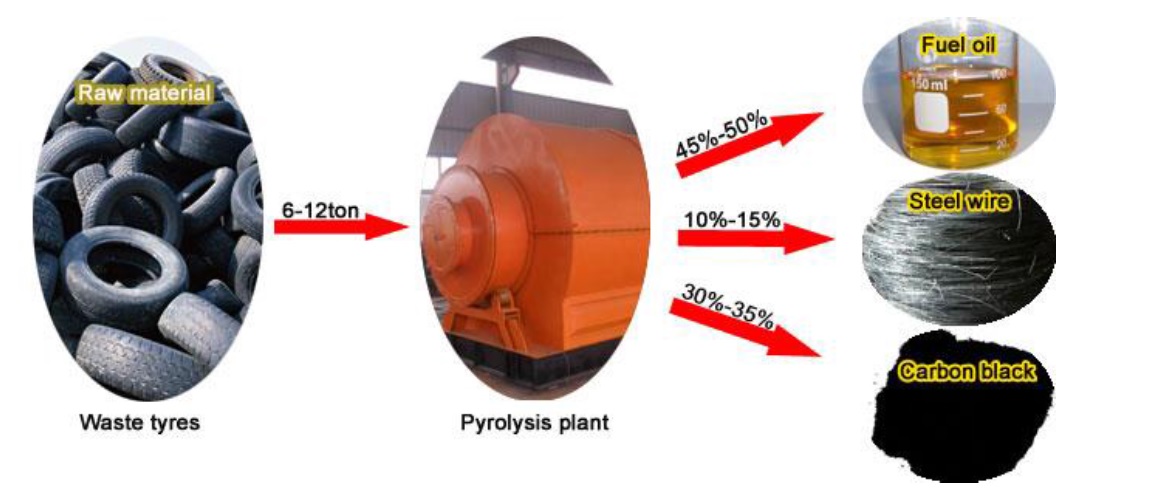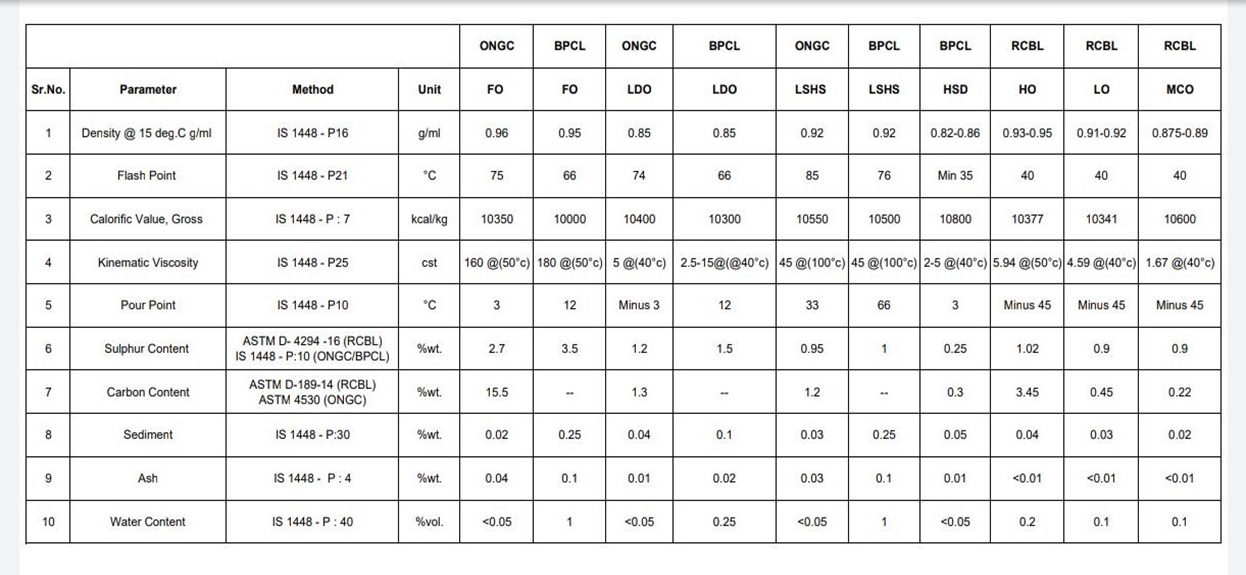Manufacturing Process
- Feed the waste Tyre into reactor and seal the feeding inlet door tightly and make sure is no gas leakage.
- Heat the reactor by using coal, charcoal, fuel gas, wood , fuel oil etc.
- The reactor will be slowly heated and when the temperature reach about 250°c the oil gas will formed.
- The oil gas coming out from the reactor then goes to condensing system and become liquid oil.
- The gas which can not liquified under normal pressure will be designed to go back to combustion system through safety device.
- It can be recycled to heat the reactor as fuel, which will save energy for the whole working process.
- After finishing oil production, the temperature of pyrolysis reactor will fall down, When the temperature fall down to 40°c, we can get carbon black and steel wire.

Product Details
At present, we manufacture Three grades of TPO :- Light Oil : Density (0.91-0.92 g/cc)
- Heavy Oil : Density (0.93-0.95 g/cc)
- Mixed Chemical Oil : Density (0.88-0.89 g/cc)
- We recommend you to replace your LDO with our MCO and Furnace oil with our Heavy oil.
- It is a 100 % replacement of LDO and Furnace Oil
Advantages Of Pyrolysis Oil
- No Need Of Preheating
- Low Sulphur Content
- Low Carbon Content
- Density and Viscosity Is Less
- High Calorific Value
Comparison Chart

Application Of TPO
- Use as Fuel : The use of TPO as a substitute to fuel is an opportunity in minimizing the operational cost and minimizing the utilization of the natural resources.
- Distilled fraction blend with other fuel oil.
Handling and Storage
- Stability : Material is stable under normal storage and handling situation
- Incompatibility : Avoid contact with acids and oxidizing agents.
- Storage : Store in tight sealed container at ambient temperature in well ventilated areas. Do not store near flame or heat.
- Handling : Only in well ventilated areas. Keep container closed when not dispensing product. Avoid body contact. Use grounding and bonding devices when transferring material.
First Aid Measures
- Eyes : Flush with eyes solution or large amount of water.
- Skin : Immediately wash with warm water and soap.
- Inhalation : Remove to fresh air. Get medical attention if symptoms occurs.
- Remove contaminated clothing and Wash contaminated clothing before reuse
Accidental Release Measures
- Small Spill Control and Recovery :
Oil absorbent should be used to contain and soak up oil. Do not use a combustible material. Wear appropriate personal protective equipment - Large Spill Control and Recovery : Safely eliminate the source of the leak. Eliminate ignition sources. Prevent runoff from entering Storm sewers and ditches. Water fog can be used to control vapours